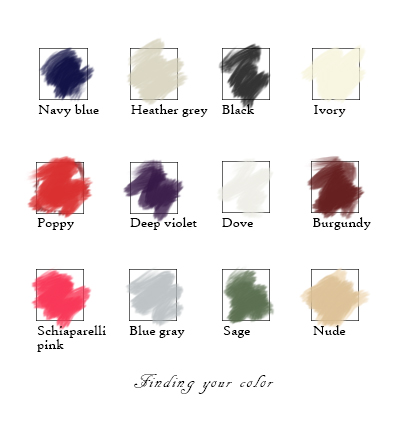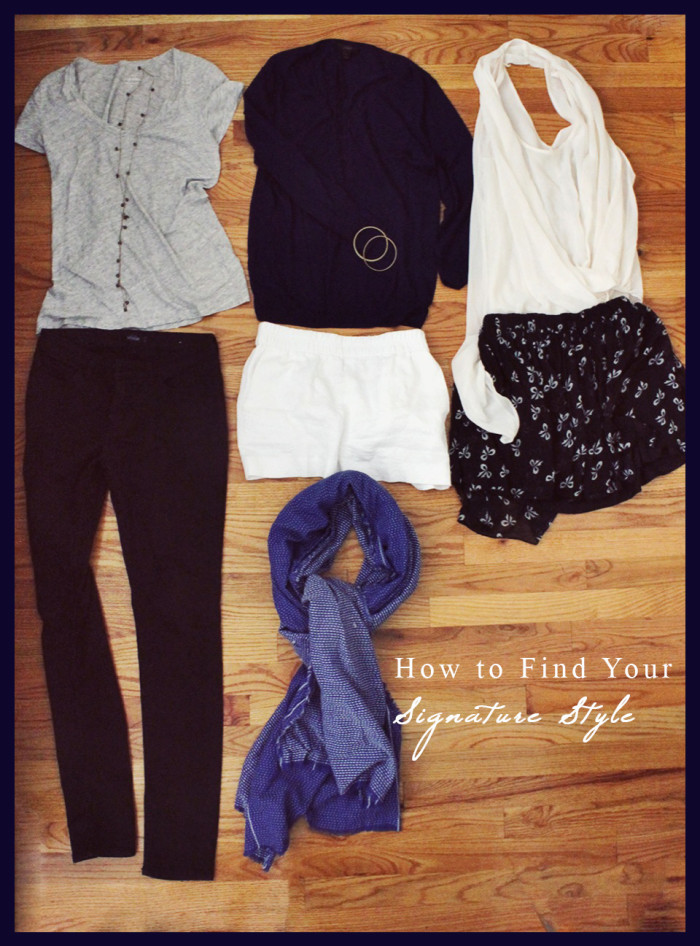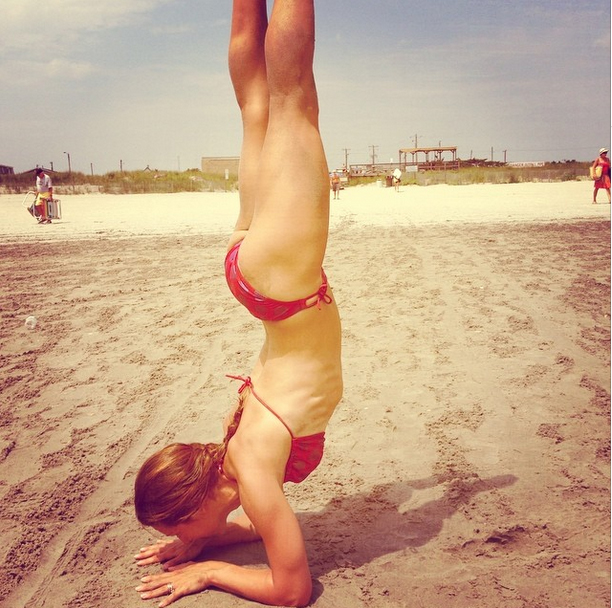One of the benefits of reaching my late twenties has definitely been finding my own signature style. Ironically, the issue of personal style was much more important from my late teens to around 22. These were the days when I subscribed to Vogue and read every page, delighted in vintage stores, and thought about trends. Occasionally I could put together an interesting, cute outfit–but more often than not, it just didn’t work. There were certain elements that I absolutely loved, like vintage scarves, but when I tried to wear them, Audrey Hepburn I was not.
Now, I don’t spend a lot of time shopping, or even poring over magazines taking notes on what kind of expensively eclectic outfits supermodels wear. At the same time, dressing has become a lot easier and more flattering. Nowadays, getting dressed is not an act of creating a persona like it once was, but letting the real me shine through–and that’s actually a lot more fun than trying to be a fashion chameleon. But isn’t it boring, you say? Here’s why you should overcome your fear about finding your signature style.
– It frees you up so you can focus on other important things in life: Not worrying about putting together an artful outfit every morning frees your creativity and energy for other pursuits.
– Consistency is chic: If your look and your “message” changes from day to day, people might remember a few great outfits but they won’t remember your style. On the other hand, you’ll become known as incredibly chic if you wear variations of few coherent, well-curated looks.
– It saves time, money, the environment. Enough said.
Here are my tips on how to find your signature style.
1. Don’t look outward, look inward.
Your signature style means yours only–so don’t be too distracted by trends. Sure, that color block Lanvin dress looks great on Emma Stone–but it doesn’t work for me, or my lifestyle. Taking external cues can be especially confusing if you take very specific items, as opposed to a general idea. For instance, if you buy a similar dress it might clash with everything else you own. But if you isolate just one idea (jewel tone against pastel, or strapless dress in satin, but not both), you might incorporate into your personal style much more successfully.
2. Know your colors.
Every woman should know what colors she looks great in–and ideally, these colors should also complement one another. Note: there are differences between colors you *look* great in, the ones you *feel* great in, and the ones you love in theory. For instance, I’ve been told I look great in yellow or pink, but the older I get the more I find it distracting to actually wear those colors (I have work to do!). Also, my favorite color ever is emerald green, but it doesn’t look great on me. Instead, my closet is full–literally full–of navy, ivory, white, heather grey, and black.

Making a swatch card like this can be a fun and helpful exercise. The first row is what I wear often; second is what I wear occasionally; third is what I want to wear more of. Swatches in each row and each column are complementary.
When you’re selecting your colors, look inside your closet for patterns. What are your favorite pieces, the ones you always reach for? Make this your theme color, the one you build your palette on (mine is navy). Then add a few neutrals you like:
Light neutrals: white, heather grey, nude, beige, ivory, tan, blush, chambray
Dark neutrals: black, charcoal, brown, khaki green, indigo denim
Important: Take note of any items you actually love but can’t seem to wear more than once per season (I’m looking at you, hot pink cotton pants!). This probably is a color crush but not a color match–don’t keep buying this hue, because it won’t get better later!
3. Know your material.
Be conscious of what materials you love and what you can’t stand–and don’t buy if the material isn’t right. I love soft, sheer, light fabrics like thin cotton knits and chiffon tops. On the other hand, woven shirts, pants, and skirts in my closet don’t get much wear, no matter how much I love them at first.
4. Figure out your silhouette and stick with it.
Again, take a look at what you already wear and hone in on what makes you feel great. Does hourglass shape (ie Zooey Deschanel) make you feel happy? Or do you feel at ease in a flowy top and skinny jeans (aka the popsickle)? Decide which skirt length works for you–a universally flattering one is just few inches above the knee. Personally I love mid-thigh just to the fingertips, which is more slimming–and keeps me looking youthful despite my more sedate palette. 🙂 Knowing the lengths and shapes that work for you saves a lot of internal debate next time you see an empire waist maxi dress on 50% sale: great for some, not for me!
5. On signature jewelry
A common mistake is buying jewelry without considering how it fits in with the rest of your collection: jewelry, like clothes, are worn together, and so should be considered as a whole. This doesn’t mean you have to buy matching sets, but that there is a common theme across the board, whether that is metal color, the shape of the chain, delicate or bold look, or the modern / graphic / naturalistic / vintage feel. The pieces I wear most often are gold with an Art Deco feel, and can be layered and matched without much thought.
I’m really curious–what’s your signature look? And what does that say about you?
Related: Finding Your Style Statement Words
Minimalist Challenge: What I Wear
Beauty Secrets: Books for Beauty
Eco Friendly Challenge: The 10 Item Wardrobe
__
Photo: Peaceful Dumpling





